Selected picture list
Selected picture
Portal:Croatia/Selected picture/January

A part of the harbour in Pula, Croatia, under sunset. Pula (Slovene: Pulj; Istriot Pula; Italian: Pola) is the largest city in Istria, situated at the southern tip of the peninsula, with a population of 62,080 (2006).
Like the rest of the region, it is known for its mild climate, tame sea, and unspoiled nature. The city has a long tradition of winemaking, fishing, shipbuilding, and tourism. Pula has also been Istria's administrative center since ancient Roman times.
| Archive | Read more... |
Portal:Croatia/Selected picture/February

Dubrovnik (Serbo-Croatian pronunciation: [ˈdǔ.bro̞ːʋ.nik], Dalmatian and Italian Ragusa (official name until 1909), Latin Ragusium, also Rhausium, Rhaugia), a historic city on the Adriatic Sea coast in the extreme south of Croatia. It is one of the most prominent tourist destinations on the Adriatic, a seaport and the centre of Dubrovnik-Neretva county. Its population was 43,770 in 2001 down from 49,728 in 1991. In the 2001 census, 88.39% of its citizens declared themselves as Croats.
Portal:Croatia/Selected picture/March
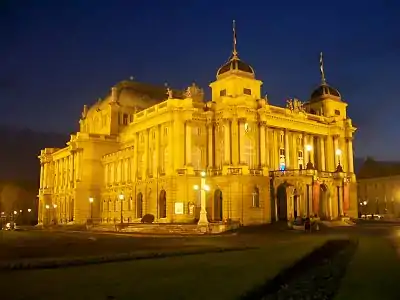
The Croatian National Theatre (Croatian: Hrvatsko narodno kazalište, HNK) in Zagreb, the capital of Croatia. It was established in 1840. There are also Croatian National Theatres in Split, Rijeka, Osijek and Varaždin.
The Theatre moved to its current building in 1895. The building itself was the project of famed Viennese architects Ferdinand Fellner and Herman Helmer, whose firm had built several theatres in Vienna.
| Archive | Read more... |
Portal:Croatia/Selected picture/April
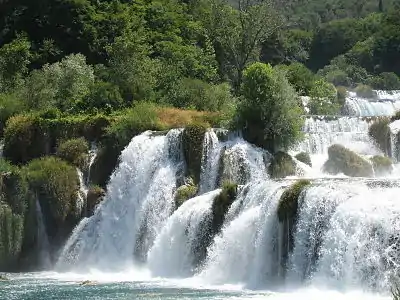
Portal:Croatia/Selected picture/May
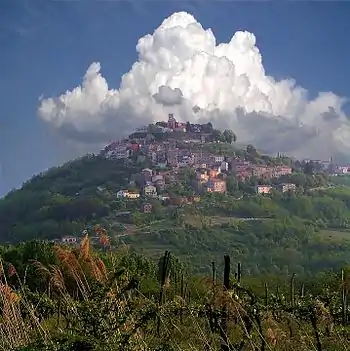
Portal:Croatia/Selected picture/June

The town's harbour provided a suitable location for a port, being geographically ideal and also protected by islands, making it a safe haven for boats hiding from hazardous winds.
Portal:Croatia/Selected picture/July

Human heads on the external part belong to unknown individuals, but it is commonly speculated that Juraj Dalmatinac made them after the local residents of Šibenik at the time.
Portal:Croatia/Selected picture/August
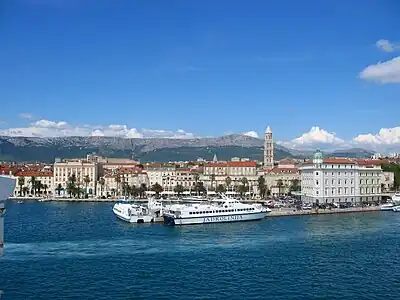
Portal:Croatia/Selected picture/September
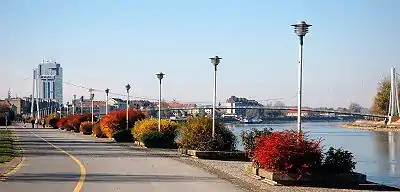
Portal:Croatia/Selected picture/October
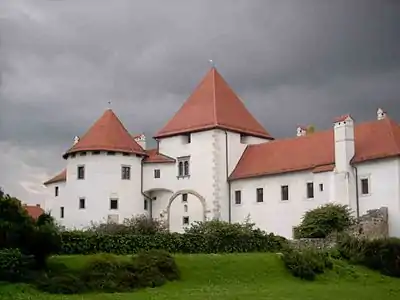
Varaždin (German: Warasdin, Hungarian: Varasd, Latin: Varasdinum) is a city in northwestern Croatia, 81 km north of Zagreb on the highway A4. With a population of 49,075 (2001), the centre of Varaždin county is located near the Drava river. It's mainly known for its baroque buildings, textile, food and IT industry.
Portal:Croatia/Selected picture/November
.jpg.webp)
Although 'brod' is the word 'ship' in modern Croatian, the city's name bears witness to an older meaning - 'water crossing'.
Portal:Croatia/Selected picture/December
.jpg.webp)